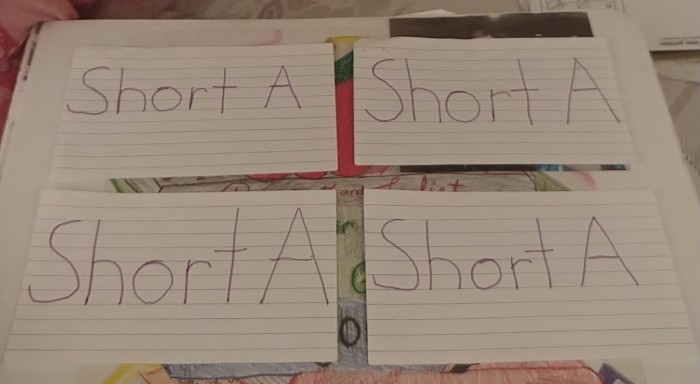The teacher uses understanding of individual differences and diverse cultures and communities to ensure inclusive learning environments that enable each learner to meet high standards.
“Everybody is a genius, but if you judge a fish by its ability to climb a tree, it will live its whole life believing that it is stupid”. Years ago, Albert Einstein said one of my favorite quotes. This has always been one of my favorite quotes because it emphasizes that no two learners are the same. Therefore, teachers cannot teach two learners as they are the same. It is highly unlikely that teachers will have twenty children in their classroom that all learn in the same way. This is because students come from different environments, have different interests, and come from different cultures. Differentiated instruction is important for teachers because it is our instructional model for teaching children according to their instructional needs rather than teaching in a “one size fits all” model. Differentiated instruction is the instructional model we use to teach the different students in our class. As we use this differentiated instruction model, it is important that we capitalize on a child’s strengths that help him or her learn so that we are not “judging a fish by its ability to climb a tree”. In other words, we must help a child succeed in learning by capitalizing on what strength a child already has to help him or her learn a particular task. For example, if a child has a strength in art, a teacher should use that strength in art to help a child complete a writing lesson by including a drawing in writing. Of course, the teacher is not just taking one child into account by creating lessons to capitalize on strengths. The teacher should keep in mind that it is important to change lesson ideas so that he or she is not just trying to appeal to one child. The teacher is responsible for trying to engage all learners with the differentiated instruction model. Therefore, a teacher should use all sizes for all students instead of that “one size fits all” model.

Because not all students learn the same way, some may need additional instructional tools to help them learn. My first artifact is an instructional tool to help a boy copy a Back to School Night letter to his parents on the board. Earlier in the school year, I could not figure out why this boy had such a hard time copying from the SMART Board. He told my cooperating teacher and I that he could see the board just fine, but copying was just too hard. We could not figure out why this boy had such a hard time with an instruction as simple as copying. After getting to know him throughout my student teaching experience, I learned that he is easily distracted. We thought that maybe it might be easier for him to copy something right in front of him to keep him focused instead of looking up at a SMART Board, which gets him so distracted. Therefore, we decided to write the individual parts of the letter for his mom and dad on three post-it notes. I put the heading on the first post-it note, the body on the second note, and the closing on the last note. The first post-it note says, “Dear Mom and Dad,”. The last post-it note says, “Love,”. After “Love,” he was supposed to put his name, which I explained to him. The second post-it note has each of the individual sentences in the body paragraph. What is written on the second post-it note is the last sentence in the body paragraph with the first two sentences scribbled out to help the boy focus on each individual sentence written in the body. I chose this artifact because it shows how important it is to “level the playing field” for each individual learner to succeed. This boy was just as capable of completing the task as his classmates, but he needed a little bit of support because he gets easily distracted. The significance of this artifact is the fact that it emphasizes the importance of leveling the playing field for each child. Every child is capable of completing a task, but it is important that every child is able to complete that task, even with some small accommodations like having parts of a letter written on post-it notes on a child’s desk. As teachers, it is important that we level the playing field for the different learners in our class so that they are just as capable of completing a task as their classmates. This artifact demonstrates my understanding of standard two because it shows how I have had to adjust instruction for a learner who is easily distracted for him to complete a task like the rest of his classmates. It shows that I understand that some students may need accommodations to complete a task like the rest of his or her classmates. I have students at so many different ability levels in my classroom, so I have to think about differentiated instruction every day. Therefore, I would probably have unique ways to level the playing field designed for each student.
I looked through the section of my student teaching binder dedicated to artifacts from the student teaching experience and found those post-it notes. I arrived at the decision to use this artifact for my portfolio because it was something unique designed particularly for this child. In other words, it shows something I needed for this child to help him complete what was expected of him. It shows that I am willing help students succeed to the best of their ability by leveling the playing field to help each child succeed. Also, it shows that I understand that every child has the strength to learn, but not every child learns the same. Therefore, sometimes I must find unique ways for a unique child learn and succeed in the classroom. Finally, it shows that I believe that every student in the classroom can learn according to his or her unique learning style.

While a child may need special support unique to his or her needs, sometimes a teacher needs to provide more than just a small accommodation. Sometimes the teacher may need to modify a literacy center for a different group of learners. My second artifact is a group of four cards that read, “Short A”. For literacy centers, my cooperating teacher has her students grouped by ability level. For the higher-level learners, I would say a word, and if the word had the short A sound, they would hold up the card that says short A. If not, they would not hold it up. For the lower-level learners, I would say a word with a short A sound; sound out every letter of the word; and they would hold up the card that says, “Short A” when I pronounced the short A sound. In other words, it shows how I differentiated the literacy center for different groups of learners. I came up with the idea for this literacy center during my second week in which I was responsible for literacy centers. My first week doing literacy centers went well, but I felt I needed to think of different ways to differentiate each center. This was the first center in which I thoroughly reflected on differentiation in my literacy centers. My original thought was to sound out each letter for all the groups. However, I thought that may be too easy for the higher group of learners; therefore, I differentiated the literacy center so that they could just hear the short A sound in a word rather than not having each individual letter sounded out to them. I knew they can identify sounds without having them isolated, so I just said the words and let them figure out if there is a short A sound in the word. This artifact demonstrates my understanding of the standard because it shows how I modified a literacy center for different groups of learners to help them master the objective of the lesson, being able to hear and identify the short I sound. In other words, it shows how some learners need to be instructed using a different method to achieve the same objective and how I modified my instruction for different groups of learners.
When I look at this artifact, I am reminded about how I reflected thoroughly about differentiated instruction because I realized how some students may need this task done differently. While I was searching through my student teaching binder, I saw these cards and I knew they had a story to tell. They tell the story of the first literacy center I really thought about differentiation in a literacy center. It also tells the story about how I think about how I have thought about differentiation in my lesson and literacy centers ever since I created and implemented this literacy center. The lesson plan format I use consists of five parts: the title (or subject), standards, objectives, procedure, and materials. The lesson plan is not a template; I type it up myself. I asked my cooperating teacher if I could start putting differentiation in my lesson plans, so I can think about how I will reach the different learners in my class. This artifact makes me a better teaching candidate because it is a reminder of how I have made my lesson plans since I created the literacy center for which these cards are used. It shows how thoroughly I think about differentiated instruction and how important it is for me to think about it. It shows that I want to reach all my learners even if it means changing the lesson or literacy centers or doing something in a different way.
